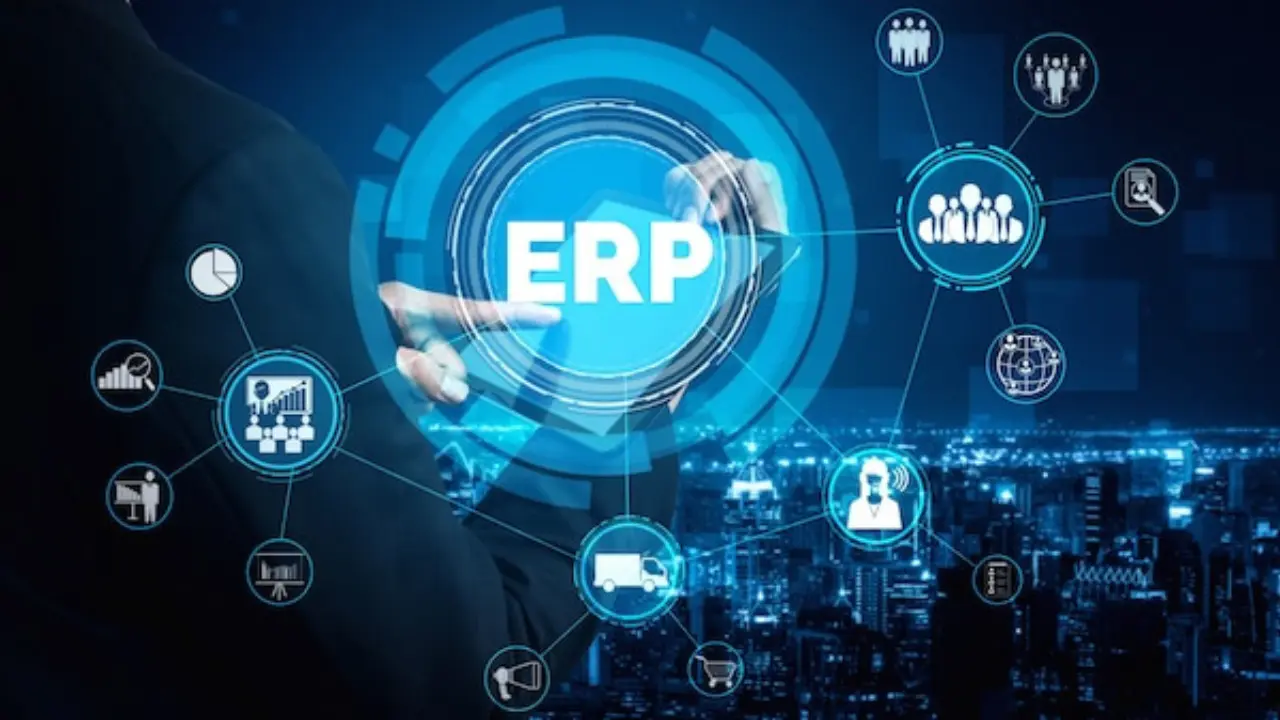

12 ERP Security Best Practices to Protect Your Business
ERP security best practices are essential, especially in the present digital era. ERP system security is a basic need as it’s not a luxury. This information includes customer details, business strategies, and financial records sensitivity to safety. A security breach can cause serious financial losses and legal repercussions.
Thus, this blog will explore the 12 best security practices and at last, the top company to comply with as your company’s security experts.
12 Top ERP Security Best Practices
To build the inaccessible fortification, we’ve incorporated 12 top ERP security best practices that will change your business into an informational security champion.
-
Minimize Threat Potential With User Permissions
Consistently access to ERP system needs should be controlled firmly. Adjust user permissions and review them regularly based on job roles.
The specific features give access to those employees, and basic duties performed by them which minimizes threats potential. For example, the team of marketing can’t access the data of the financial team in the ERP system.
-
Enable Security Features With Strong Passwords
To configure the system securely, ERP vendors provide specific guidelines. Following these are the fundamentals for building a robust security way that helps in assisting security settings, and lower breaches risk.
Consider it enabling security features like unnecessary services that could introduce security holes, strong password rules, encryption protocols, and vendor insurance. Strong passwords that are complex or hard to break and executing protocols for sensitive data scrambling.
Remains updated on the recent security from the insanity of the vendor for ERP smooth and secure work.
-
Regular Security Audits To Assess Policies
Regular security audits and comprehensive assessments assess the system’s policies, security measures, and controls to distinguish potential gaps before they are taken advantage of by attackers. Audits and reviews likewise assist you with the remaining complaints as per industry guidelines.
The experiences and insights you get and gain from the audits will further develop the security posture, integrity, and privacy of ERP data. Imagine a certain user group with overly broad permissions to uncover it. By correcting this oversight, you’ve reinforced your ERP system’s security.
-
Data Information Encryption
Data information encryption converts your data into a format of a complex combination. With the help of data encryption, you can add an additional layer of safety and security. Regardless of unapproved individuals get hold of the information, which will be unintelligible without any decryption key.
Encryption not only shields against breaches but fabricates trust with customers, clients, and partners guaranteeing them their significant information will be secure.
-
Secured Organization Network
The Secured Organization Network serves a similar purpose to the ERP system. It disconnects your ERP system from less basic parts of an organization creating a safe edge for unauthorized access. Firewalls behave like vigilant watchmen at the entryway, which meticulously inspect and examine the approach with outgoing traffic and obstruct actions that are suspicious.
Interruption detecting systems can be like scouts which continuously examine the edge of attempted intrusions. Moreover, sectioning the communication between various parts of the ERP system lessens the potential issues. Thus, cautiously planning and maintaining a protected infrastructure lays areas of strength against cyber threats.
-
Multi-Factor Authentication and Verification
Multi-factor authentication and verification to have an additional lock which provides an additional safety layer beyond the conventional username and combination of passwords. It requires clients and users to give various types of ID’s for access.
This also includes something the client or users know like a secret code or password, or something they have like a kind of smartphone unique code or fingerprint. This fundamentally reduces the risk of unauthorized access, as the need might arise to be verified and checked for entry. Multi-factor verification assists in combatting threats with phishing messages, emails, and passwords ensuring only approved faculty can get to your ERP system’s data.
-
Regular Patch Management For Security
To maintain a secure system software vendors release security patches in routine to fix up the gaps. These patches address the new weaknesses that could be taken advantage of by the attackers.
Instantly applying these patches is important to close these potential issues which is the entry point. Neglecting or Postponing updates uncovered your ERP system to realize security risks, which increases and improves the chances of unauthorized access or breaches.
Outdated software resembles the weaknesses which is a prime target for attackers. Regular patch management reinforces your ERP system’s security and ensures compliance consistency with the information-protecting standards. By being proactive with fixing and updating, you can reinforce the resilience of your ERP data and safeguard it from arising threats.
-
Data Monitoring and Audit Logs
Data monitoring and audit logs fortifications to constantly monitor for suspicious activity. Similarly, consistent monitoring of traffic data and system activity considers the discovery of unusual examples and patterns of deviations from the standards.
This can be characteristic of potential security threats. Besides this comprehensive logging ERP security best practices record the client or user exercise providing the potential security or suspicious behavior.
Security teams then analyze these logs to identify irregularities, unapproved access, or potential security breaks progressively. By joining review logs with persistent checking, you can answer promptly to security incidents, research and investigate breaches, and take proactive lengths to protect ERP information from both inside and outside issues.
-
Crisis Vault Regular Backups
Your Crisis Vault Regular Backups are the most reliable places to save from breach data. Regular data backups act as crisis vaults, creating duplicates of the basic data. In case of any information loss because of any hardware failures or security breaches, you can re-establish your information to its most recent state, limiting downtime and information loss.
It’s advisable to store backups and data in secure, offsite areas, or leverage cloud-based backup services with robust encryption for an additional layer of security and assurance.
-
Disaster Recovery Plan
A disaster recovery plan is a blueprint for an emergency which is a very well-crafted disaster recovery plan and is also similar to a blueprint for exploring crisis. It outlines the step-wise techniques to be continued in case of a data breach, system failure, natural disaster, or any other event that could disrupt your ERP system.
The plan ought to remember details and information about recovery procedures, characterize the roles along with the responsibilities of key staff during the recovery process, and lay out the specific protocols for coordination. Customary testing and other activities of the plan are essential for distinguishing expected potential issues and refining procedures along with strategies.
Having a well-planned disaster recovery can limit and minimize downtime, and quickly recover ERP data and services which ensures business continuity with negligible disturbance or disruption.
-
Customary Programs of General Security Procedures
Educate your defenders with user training and awareness because A military is just essentially as strong as its soldiers. Likewise, the strength of your ERP security relies upon the worker's or employees' ERP security best practices, data handling protocols, and recognizing cyber threats.
Customary programs keep users informed about advancing digital threats and system updates. Moreover, preparing or training encourages users within the organization where everybody assumes to be a part of ERP. Enabling and educating users become a vital part of general security procedures, alleviating the risk of human mistakes or unintentional data breaches.
-
Well-Defined Offboarding Procedures
Offboarding procedures revoke access for departing employees just as when a knight leaves their access is fortified and denied. Similar guidelines apply whenever any employee offboards voluntarily or involuntarily. At the point when a representative leaves, it’s basic to renounce their admittance to the ERP system, and other repositories of important data immediately.
This can be accomplished through close collaboration among the HR and IT departments. Quickly eliminating access rights and disabling records mitigates the dangers related to the associated account which breaches, insider threats, and information breaches. Having well-defined offboarding procedures or systems guarantees ensures that the existing employees never again be a security threat to your ERP data.
Partner With Reliable Security Experts: EM Production Pro
By executing these 12 prescribed procedures and ERP security best practices, you can change and transform your ERP system into a fortification of data security. Our solutions offer a team of ERP security experts who can assist you with a specific plan customized to your particular business needs. Their expertise across different ERP platforms ensures that they can give the most ideal direction to your remarkable clients. Contact us today and get the demo to learn in deep about our products and services evaluation.
Together, you can safeguard your valuable information and propel your business forward. In the present advanced digital world, cyber threats are constantly evolving, and being proactive in protecting your valuable data is crucial. A security technique or strategy is definitely not a one-time fix, it’s a continuous interaction that requires vigilance and adaptation.
By following these prescribed procedures and remaining informed about the most recent security updates and improvements, you can build a robust framework that can protect your ERP data and encourage trust among the clients or users along with partners, clients, and users.
Don’t wait until a security breach strikes to focus on prioritizing data security and take action today around your data security with us. Our customized solutions are the ERP security best practices options to provide safety and security related to ERP systems.
Haven’t Constructed Or Built Any Fortress Yet?
Try not to wait till any breach. Implement and carry out the above-mentioned ERP security best practices with us - EM Production Pro and partnering with us for the best ERP solutions. Change or transform your ERP system into an impermeable stronghold, safeguarding and ensuring success. Take the first step towards the safety of your data



